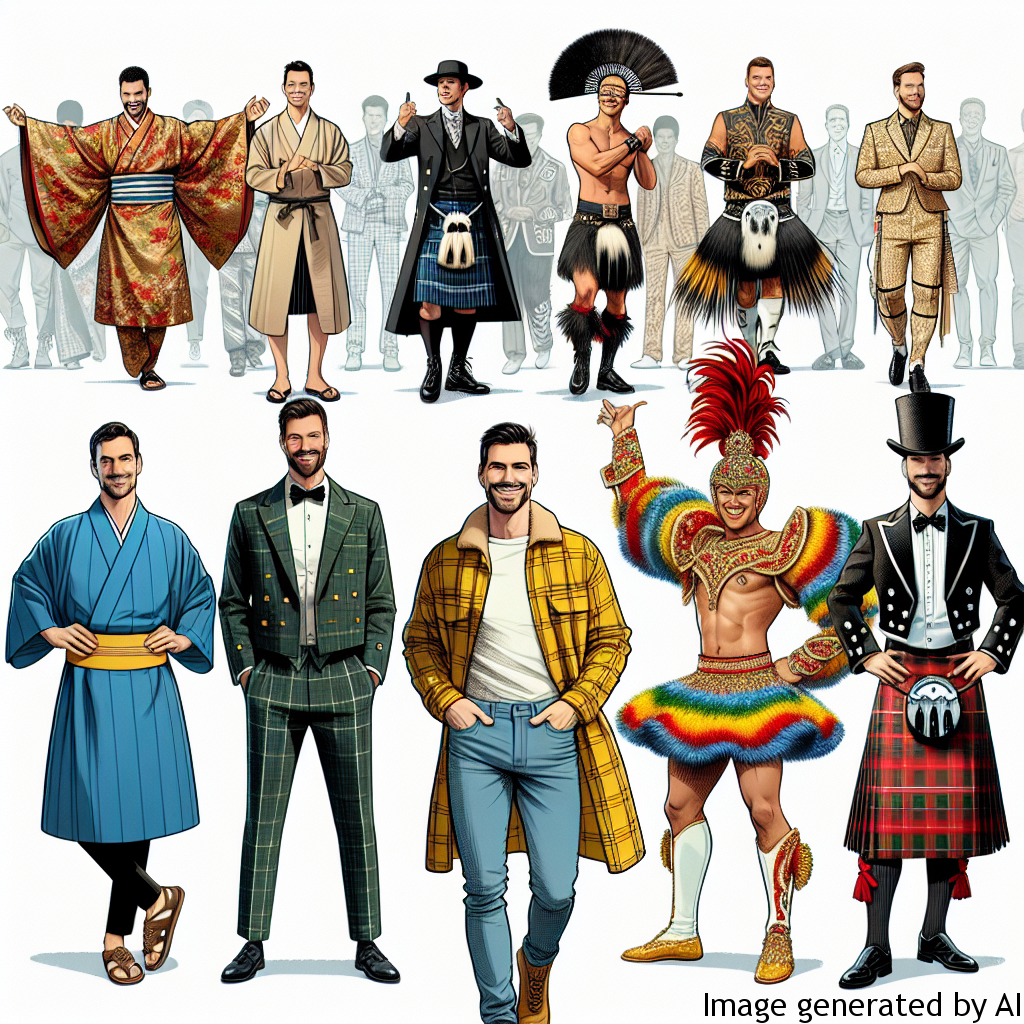Introduction
The term ‘fashion’ has always been associated with the idea of unique identification. It helps to express individual personality and culture. However, it’s also interconnected with the concepts of gender and sexuality. This becomes even more elaborate when we consider men’s fashion around the globe and how it is influenced by societal gender expectations, where international differences play a significant role.
Gender Expectations and Their Impact on Men’s Psychological Health
Understanding Gender Expectations
Gender expectations refer to societal norms and roles each sex is expected to conform to. These norms can determine everything from behavior and personal conduct to attire and mannerisms. In many cultures, these expectations have been rigid, especially for men. They are often expected to carry themselves in a certain ‘masculine’ way, which extends to their fashion choices such as preferring “men’s” clothing like pants, suits, or traditional wear in their respective cultures.
Impact on Men’s Psychological Health
Men’s mental health can be significantly affected by the pressure of these societal expectations. There are times when a man may feel compelled to conceal his true fashion sense or sexual orientation because it doesn’t align with predetermined norms. Such concealment can cause stress, anxiety, depression, and even suicidal thoughts. The constant pressure to ‘fit in’ can prevent men from exploring their personality and expressing their true identities.
Examples of How Gender Roles Can Influence Men’s Lives
A clear example of the role of fashion in reinforcing gender norms can be found in professional settings. In most business cultures, men are expected to wear formal suits, deemed as masculine attire, with minimalistic colors and patterns. Anything outside this norm can be considered unprofessional or even inappropriate. As a result, men who prefer more vibrant colors or patterns may feel compelled to suppress their preferences to adhere to the standard.
Similar norms extend to everyday life as well. In many societies, men who choose to express themselves through clothing that’s typically associated with women may face societal stigma, discrimination and in extreme cases, physical violence. This can cause significant harm to the individual’s mental health and general well-being.
Tips for Improving Psychological Health with Consideration to Gender Roles
Gender norms and expectations create boundaries, but they can be challenged and amended through awareness, open discussion, and education. Here are some tips for improving men’s psychological health in relation to gender roles:
- Encouraging Self-Expression: Men should be encouraged to express themselves freely, even if it doesn’t conform to societal norms of masculinity.
- Acceptance: Society as a whole needs to promote acceptance of diverse gender expressions and sexual orientations. This acceptance can help to reduce the stigma associated with men deviating from gender-normative fashion choices.
- Professional Support: Men struggling with their identity or societal expectations should be encouraged to seek professional help, such as therapists or counselors who specialize in gender issues. They can provide effective strategies to handle stress and navigate societal pressures.
Conclusion
International differences in men’s fashion and sexuality underscore the diverse interpretations of masculinity around the world. Broadening societal understanding of gender norms and increasing acceptance of different forms of self-expression is crucial for improving men’s psychological health. By creating a more inclusive society, we can empower all men to express their identities freely, ultimately promoting their mental wellness while challenging the existing paradigms of masculinity.

